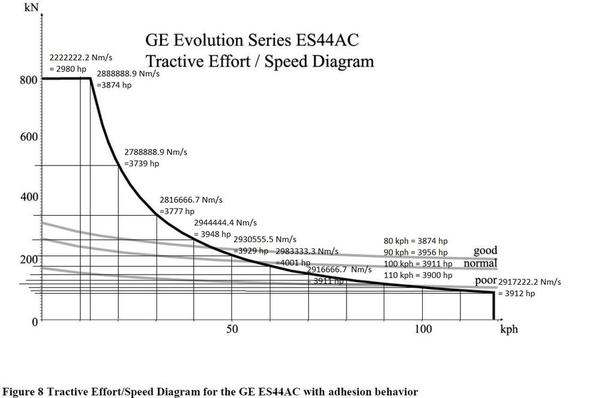Grannyjoans
Member
- Joined
- 29 Mar 2017
- Messages
- 403
The difference between the 60 and 66 is not to do with power at rail it is gearing. The 66's are just geared higher so that they are faster than a 60. A 66 will haul a medium weight freight train much, much faster than a 60. But when it comes to hauling heavy freights at low speeds, the 60 has the advantage. Due to different gear ratios.
Since the GP Class 66 was intended to be a "general purpose" locomotive capable of working any freight train in the country (which it has done), it had to be higher geared to enable it to work the higher speed freights, not just the slower heavier freight.
The gear ratio on the 66 is not a flaw. If 66s had class 60 gearing, they would be no good for any class 4 work, and a lot of freights now run as class 4's. Not just Intermodals but I think even empty Biomass trains run as a class 4 amongst other things. There are more trains that a class 66 can work that a 60 can't work, than the other way round. Plus you can use a low-geared 66/6 or a 59 for those super heavy freights. So the 66s can cover everything really. A 60 can only cover class 6 & 7 freights.
Since the GP Class 66 was intended to be a "general purpose" locomotive capable of working any freight train in the country (which it has done), it had to be higher geared to enable it to work the higher speed freights, not just the slower heavier freight.
The gear ratio on the 66 is not a flaw. If 66s had class 60 gearing, they would be no good for any class 4 work, and a lot of freights now run as class 4's. Not just Intermodals but I think even empty Biomass trains run as a class 4 amongst other things. There are more trains that a class 66 can work that a 60 can't work, than the other way round. Plus you can use a low-geared 66/6 or a 59 for those super heavy freights. So the 66s can cover everything really. A 60 can only cover class 6 & 7 freights.
Last edited by a moderator:

